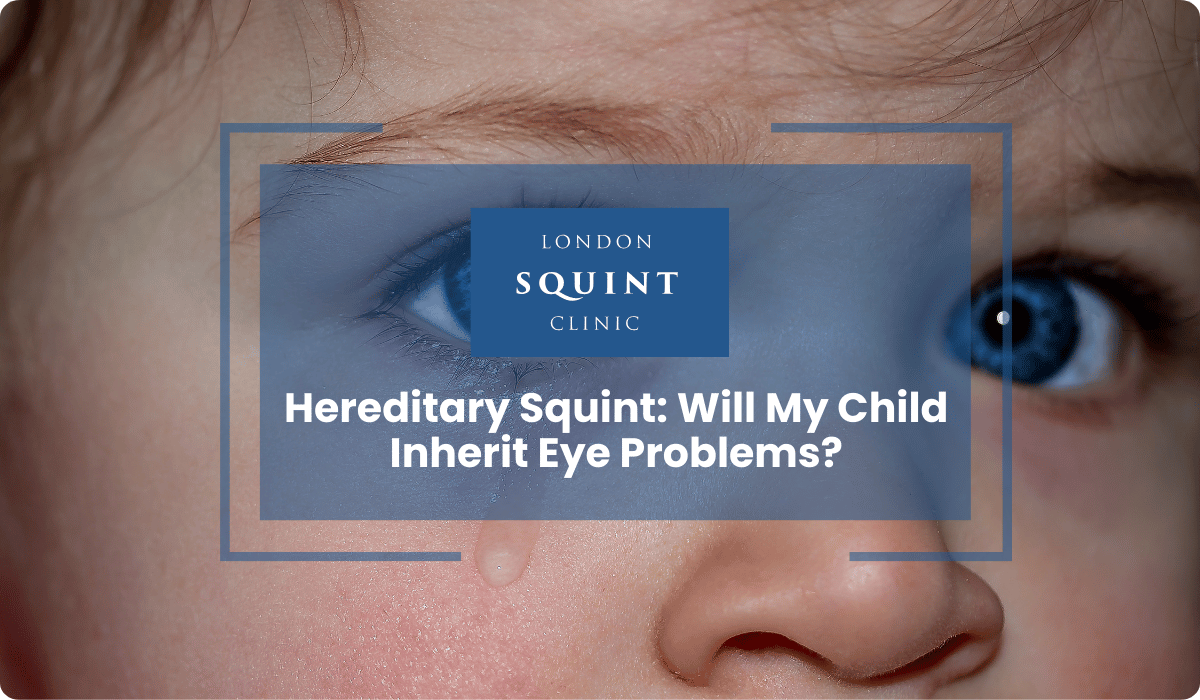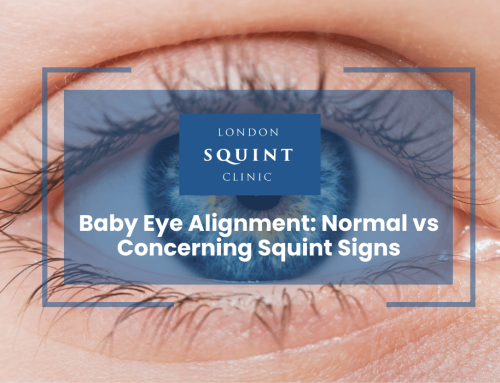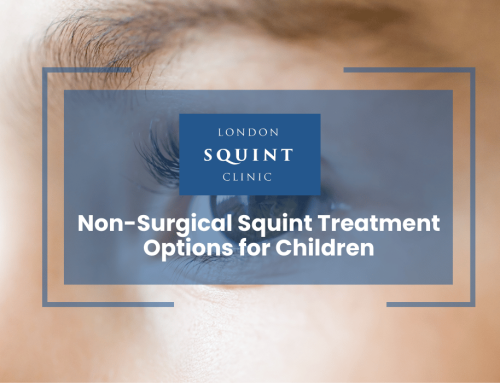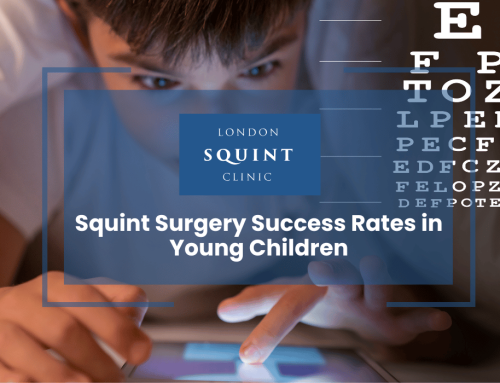Hereditary Squint: Will My Child Inherit Eye Problems?
Supporting Your Child Through Hereditary Eye Condition Management
Managing a hereditary eye condition like strabismus requires not only medical intervention but also emotional and practical support. Parents play a crucial role in helping children navigate the challenges of treatment while building confidence and resilience.
Effective strategies for supporting your child include:
- Age-appropriate explanation: Use simple, positive language to help your child understand their condition and treatment. Books, drawings, or dolls can help illustrate concepts for younger children.
- Consistent treatment adherence: Establish routines that incorporate eye patching, glasses wear, or eye exercises. Reward charts or small incentives can help motivate younger children.
- Normalize the experience: Point out other children or admired figures who wear glasses or have undergone similar treatments. Consider joining support groups where children can meet peers with similar conditions.
- Address teasing proactively: Role-play responses to potential comments about glasses or eye patches. Teach simple, matter-of-fact explanations your child can use with peers.
- Collaborate with educators: Ensure teachers understand your child’s condition, especially if treatment like patching needs to continue during school hours.
- Celebrate progress: Acknowledge improvements in vision or alignment, however small, to maintain motivation during what can be a long treatment journey.
Remember that children often take cues from their parents’ attitudes. Approaching the condition with positivity and matter-of-fact confidence helps children view their treatment as normal and manageable rather than defining or limiting.
For older children and teenagers, gradually transfer responsibility for treatment management while maintaining supportive oversight. This builds independence and ensures they develop the skills to advocate for their visual health as they mature.
Finally, consider the psychological impact of visible eye conditions. Some children may benefit from professional counseling if they experience significant social or emotional challenges related to their appearance or treatment. Building resilience and a positive self-image is as important as the medical management of hereditary eye conditions.
Table of Contents
- Understanding Hereditary Squint: Genetics and Eye Alignment
- Is Squint Truly Inherited? The Science Behind Genetic Strabismus
- Assessing Your Child’s Risk: Family History and Eye Problems
- Early Signs of Inherited Eye Conditions in Children
- How Pediatric Ophthalmologists Diagnose Genetic Eye Issues
- Treatment Options for Children with Hereditary Squint
- Preventing Complications: When to Seek Specialist Care
- Supporting Your Child Through Hereditary Eye Condition Management
Understanding Hereditary Squint: Genetics and Eye Alignment
Squint, medically known as strabismus, is a condition where the eyes do not align properly. One eye may turn inward, outward, upward, or downward while the other focuses straight ahead. Many parents wonder about the genetic component of this condition, especially if there’s a family history of eye alignment issues.
Hereditary squint refers to strabismus that has a genetic basis, potentially passing from parents to children through genetic inheritance. The relationship between genetics and eye alignment is complex, involving multiple genes that control eye muscle development, neural connections, and visual processing pathways in the brain.
Research suggests that approximately 30% of children with strabismus have a family member with the condition. This familial pattern indicates a genetic component, though it’s important to understand that hereditary squint doesn’t follow a simple inheritance pattern. Rather than being caused by a single gene, hereditary strabismus typically involves multiple genetic factors interacting with environmental influences during a child’s development.
The genetic factors may affect various aspects of visual development, including:
- The formation and function of extraocular muscles
- Neural pathways controlling eye movement coordination
- Visual processing centres in the brain
- Refractive development of the eye
Understanding these genetic foundations helps both medical professionals and parents recognise the potential risk factors and implement appropriate monitoring strategies for children with family histories of eye alignment issues.
Is Squint Truly Inherited? The Science Behind Genetic Strabismus
The inheritance patterns of strabismus are not straightforward, making it difficult to predict with certainty whether a child will develop the condition based solely on family history. Current research indicates that genetic strabismus follows a multifactorial inheritance pattern, meaning multiple genes and environmental factors contribute to its development.
Studies examining the heritability of strabismus have found that:
- If one parent has strabismus, the risk of their child developing the condition increases to approximately 15-20%, compared to the general population risk of about 2-4%
- If both parents have strabismus, the risk may increase further to around 25-30%
- Identical twins show a higher concordance rate (both having the condition) than fraternal twins, further supporting the genetic component
Certain types of strabismus show stronger genetic associations than others. For example, accommodative esotropia (inward-turning eye related to focusing efforts) and infantile esotropia (inward-turning eye present from birth) appear to have stronger hereditary components than other forms.
It’s important to note that while genes play a significant role, environmental factors during pregnancy and early childhood development also contribute to the risk. These may include premature birth, low birth weight, maternal smoking during pregnancy, and certain developmental disorders.
The complex interplay between genetic predisposition and environmental influences means that even with a strong family history, many children will not develop strabismus. Conversely, children with no family history may still develop the condition due to other risk factors or spontaneous genetic variations.
Assessing Your Child’s Risk: Family History and Eye Problems
Understanding your family’s eye health history is a crucial step in assessing your child’s risk for hereditary squint and other vision conditions. A comprehensive family history can provide valuable insights for both parents and healthcare providers in determining appropriate screening schedules and preventive measures.
When evaluating family history for eye problems, consider the following:
- Direct relatives (parents, siblings) with strabismus or other eye alignment issues
- Extended family members (grandparents, aunts, uncles, cousins) with eye conditions
- The specific type of strabismus present in family members (esotropia, exotropia, etc.)
- Age of onset in affected family members
- Associated conditions such as amblyopia (lazy eye), significant refractive errors, or other eye disorders
When discussing family history with your child’s ophthalmologist, be prepared to share information about other related conditions that may increase risk, including:
- Significant refractive errors (high hyperopia/long-sightedness)
- Genetic syndromes that affect development
- Neurological conditions
- Premature birth or complications during pregnancy
A detailed family history allows your child’s eye specialist to create a personalised risk assessment. For children with significant family history of congenital or acquired squint, earlier and more frequent eye examinations may be recommended, even in the absence of obvious symptoms.
Remember that while family history increases risk, it doesn’t guarantee your child will develop strabismus. Conversely, many children develop squint without any family history of the condition. Regular eye examinations remain important for all children, regardless of family history.
Early Signs of Inherited Eye Conditions in Children
Recognising the early signs of inherited eye conditions, particularly strabismus, is crucial for timely intervention. Parents should be vigilant for these indicators, especially if there’s a family history of eye alignment issues. Early detection can significantly improve treatment outcomes and prevent complications like amblyopia (lazy eye) or permanent vision impairment.
Key signs that may indicate hereditary squint or other genetic eye conditions include:
- Misalignment of eyes: One eye turning inward, outward, upward, or downward while the other looks straight ahead. This may be constant or intermittent.
- Head tilting or turning: Children may adopt unusual head positions to compensate for vision problems or to align their eyes.
- Squinting or closing one eye: This behaviour may indicate the child is trying to eliminate double vision or improve visual clarity.
- Poor depth perception: Difficulty judging distances or clumsiness beyond what’s typical for their developmental stage.
- Complaints of eye strain or headaches: Older children may verbalise discomfort after visual activities.
- Abnormal light reflection in pupils: When light shines into the eyes, the reflection should appear symmetrically in both pupils.
For infants and very young children, parents should watch for:
- Eyes that appear misaligned after 3-4 months of age
- Lack of eye contact or visual tracking
- Excessive tearing or eye rubbing
- Unusual sensitivity to light
- White or cloudy appearance in the pupil
It’s important to note that some children with strabismus may not show obvious external signs. Regular vision screenings are essential, particularly for children with family histories of childhood eye conditions. Any concerns about a child’s vision or eye alignment should prompt consultation with a paediatric ophthalmologist, even between scheduled check-ups.
How Pediatric Ophthalmologists Diagnose Genetic Eye Issues
Diagnosing hereditary squint and other genetic eye conditions requires specialised expertise and techniques, particularly when examining young children. Paediatric ophthalmologists employ a range of child-friendly assessment methods to evaluate eye alignment, visual function, and potential genetic factors.
The diagnostic process typically includes:
- Comprehensive family history: Detailed questions about eye conditions in immediate and extended family members help establish potential genetic patterns.
- Visual acuity testing: Age-appropriate methods assess how well each eye sees, from picture charts for toddlers to letter charts for older children.
- Ocular alignment assessment: Specialised tests like the cover test, Hirschberg test, and prism tests measure the type and magnitude of any misalignment.
- Refractive error measurement: After using eye drops to temporarily relax focusing muscles (cycloplegia), the ophthalmologist determines if glasses are needed and whether refractive errors might contribute to the squint.
- Ocular motility examination: Evaluates how well the eyes move in different directions and work together as a team.
- Stereopsis testing: Assesses depth perception and binocular vision using specialised 3D tests.
- Examination of eye structures: Checks for any structural abnormalities that might indicate specific genetic syndromes.
For suspected genetic conditions, additional testing may include:
- Electroretinography to assess retinal function
- Optical coherence tomography to examine retinal structure
- Visual evoked potentials to evaluate visual pathway function
- Genetic testing when specific hereditary conditions are suspected
Paediatric ophthalmologists are specially trained to make these examinations engaging and non-threatening for children. They use toys, games, and child-friendly equipment to obtain accurate diagnostic information even from very young or non-verbal children. This specialised approach ensures that genetic eye conditions can be identified early, even before children can reliably report visual symptoms.
Treatment Options for Children with Hereditary Squint
Treatment for hereditary squint focuses on correcting eye alignment, preserving or improving vision in both eyes, and developing normal binocular vision. The approach is highly individualised, taking into account the child’s age, type and severity of strabismus, visual acuity, and overall development.
Common treatment strategies include:
- Prescription eyewear: Glasses are often the first-line treatment, especially for accommodative esotropia (inward-turning eyes related to focusing efforts). Correcting refractive errors like hyperopia (long-sightedness) can sometimes resolve certain types of squint entirely.
- Patching therapy: For children with amblyopia (lazy eye) associated with strabismus, covering the stronger eye with an adhesive patch encourages use of the weaker eye. The duration and frequency depend on the child’s age and severity of amblyopia.
- Atropine eye drops: An alternative to patching, these drops temporarily blur vision in the stronger eye, forcing use of the weaker eye. This can be particularly useful for children who resist wearing patches.
- Vision therapy exercises: Specific eye exercises may help improve eye coordination, focusing abilities, and binocular vision skills in certain types of strabismus.
- Prism lenses: Special lenses that bend light can help compensate for misalignment and reduce double vision in some cases.
- Botulinum toxin (Botox) injections: Temporary weakening of specific eye muscles can help correct alignment in certain situations or predict surgical outcomes.
- Surgical intervention: When non-surgical approaches are insufficient, surgery on the eye muscles may be recommended to improve alignment. This might involve strengthening, weakening, or repositioning specific muscles.
For children with hereditary forms of strabismus, treatment often begins earlier and may require longer follow-up due to the potential for recurrence. The genetic basis of the condition means that some children may need multiple interventions or adjustments to their treatment plan as they grow.
The timing of intervention is crucial, particularly during the critical period of visual development (generally the first 8-10 years of life). Early treatment not only improves cosmetic appearance but also maximises the potential for developing normal binocular vision and depth perception, which can have lifelong benefits for visual function.
Preventing Complications: When to Seek Specialist Care
Timely intervention is crucial for preventing long-term complications associated with hereditary squint. Without proper treatment, children with strabismus may develop permanent visual impairments, including amblyopia (lazy eye), loss of depth perception, and persistent double vision. These complications can affect academic performance, sports participation, and even career options later in life.
Parents should seek specialist care from a paediatric ophthalmologist in the following situations:
- Family history of strabismus: Children with parents or siblings who have squint should have their first comprehensive eye examination by 6-12 months of age, even without obvious symptoms.
- Any noticeable eye misalignment: If you observe even occasional turning of one eye after 3-4 months of age, prompt evaluation is warranted.
- Failed vision screening: Follow up immediately if your child fails a vision screening at the GP surgery, health visitor check, or school.
- Developmental concerns: Children with developmental delays or neurological conditions have higher rates of vision problems and benefit from early specialist assessment.
- Premature birth: Babies born prematurely should receive comprehensive eye examinations according to guidelines for premature infants, regardless of family history.
- Eye injuries: Any trauma to the eye or orbit may affect alignment and requires prompt evaluation.
Red flags that require urgent assessment include:
- Sudden onset of squint at any age
- Squint associated with headaches, vomiting, or changes in behaviour
- Loss of vision or dramatic change in vision
- Abnormal pupil appearance or reactions
- Bulging of one or both eyes
Regular follow-up care is equally important for children already diagnosed with hereditary squint. Treatment plans often need adjustment as children grow, and monitoring for recurrence or development of associated conditions is essential. The frequency of follow-up visits will depend on the specific condition, treatment approach, and the child’s age and developmental stage.
Remember that early intervention during the critical period of visual development (generally the first decade of life) offers the best opportunity to prevent permanent visual impairment and achieve optimal outcomes.
Supporting Your Child Through Hereditary Eye Condition Management
Frequently Asked Questions
Is squint hereditary in babies?
Yes, squint (strabismus) can be hereditary in babies. Research shows that approximately 30% of children with strabismus have a family member with the condition. If one parent has strabismus, a child’s risk increases to 15-20% compared to the general population risk of 2-4%. The inheritance pattern is complex and multifactorial, involving multiple genes rather than a single gene. However, having a family history doesn’t guarantee a child will develop squint, as environmental factors also play a significant role.
At what age should a child with family history of squint be examined?
Children with a family history of squint should have their first comprehensive eye examination by 6-12 months of age, even without obvious symptoms. For infants with strong family histories or multiple risk factors, some specialists recommend an initial screening as early as 3-4 months. Regular follow-up examinations should continue throughout childhood, typically annually or as recommended by the pediatric ophthalmologist, to monitor for late-onset strabismus and related conditions.
Can squint skip a generation?
Yes, squint can appear to skip generations in a family. This occurs because strabismus follows a complex inheritance pattern involving multiple genes and variable expression. A person may carry genetic factors for squint without developing the condition themselves, then pass these genes to their children who may develop strabismus. Additionally, the interaction between genetic predisposition and environmental factors means that even with identical genetic makeup, one family member might develop squint while another doesn’t.
What are the chances of my child developing squint if I have it?
If one parent has squint, the chance of their child developing the condition is approximately 15-20%, compared to the general population risk of 2-4%. If both parents have strabismus, the risk increases further to around 25-30%. However, these are statistical probabilities rather than certainties. The specific type of strabismus, age of onset, and presence of other risk factors also influence individual risk. Regular eye examinations are essential for early detection and intervention, regardless of the statistical risk.
What types of squint are most likely to be inherited?
Certain types of squint show stronger genetic associations than others. Accommodative esotropia (inward-turning eye related to focusing efforts) and infantile esotropia (inward-turning eye present from birth) appear to have stronger hereditary components. Congenital fourth nerve palsy (causing a specific pattern of vertical misalignment) also frequently runs in families. Convergence insufficiency (difficulty keeping eyes aligned for near tasks) and some forms of intermittent exotropia (outward-turning eye) may also show familial patterns, though the genetic links are less well-established.
Can hereditary squint be prevented?
Hereditary squint cannot be completely prevented since the genetic predisposition cannot be changed. However, early detection and intervention can effectively manage the condition and prevent complications like amblyopia (lazy eye) or permanent vision impairment. For children with known family history, preventive measures include early and regular eye examinations, prompt correction of any refractive errors with glasses, and monitoring for early signs of eye misalignment. Environmental factors that may trigger or worsen squint, such as significant uncorrected refractive errors, should be addressed promptly.
Does hereditary squint always require surgery?
No, hereditary squint doesn’t always require surgery. Treatment is individualized based on the type and severity of the condition. Many cases can be successfully managed with non-surgical approaches, including prescription eyewear, patching therapy, vision exercises, or prism lenses. Surgery becomes an option when non-surgical methods are insufficient to correct alignment or when the squint is large and constant. Even with a strong genetic component, many children respond well to conservative treatments, especially when the condition is detected and addressed early.
Find out if you are suitable for Double Vision Treatment
Not everyone is eligible for double vision surgery.
Find out if you could benefit from this life-changing surgery by taking the quick self-suitability quiz below:
Our most popular procedures

Hello, I’m Nadeem Ali
I’m one of the few eye surgeons in the world with 100% focus on Squint and Double Vision Surgery.
I have 24 years of eye surgery experience, and worked for 13 years as a Consultant at London’s renowned Moorfields Eye Hospital.
In 2023, I left the NHS to focus fully on treating patients from across the world at the London Squint Clinic. You can read more about me here.
There’s lots of information on the website about: squint surgery, double vision surgery and our pricing.
The most rewarding part of my job is hearing patients tell me how squint or double vision surgery has changed their lives. You can hear these stories here.
Mr Nadeem Ali
MA MB BChir MRCOphth FRCSEd(Ophth)





